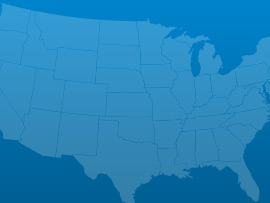The overall health of Michigan’s energy generation
and transmission system generally meets the
State’s current needs, but reliability and security
concerns are posed by the State’s dependence
on coal and natural gas fueled generation with fuel
supplied by external sources, as well as congestion
and interface limitations existing between the
State’s transmission system and neighboring grids
in Wisconsin, Indiana, Ohio, and Ontario, Canada.
Diversification of energy supply and investments
in renewable energy and transmission system
upgrades are needed to address these and other
concerns such as fossil energy’s contributions to
global warming.
 Aviation
Aviation Dams
Dams Drinking Water
Drinking Water Energy
Energy Inland Waterways
Inland Waterways Roads
Roads Transit
Transit Urban Runoff
Urban Runoff Wastewater
WastewaterA: Exceptional, B: Good, C: Mediocre, D: Poor, F: Failing, ?: Incomplete
Each category was evaluated on the basis of capacity, condition, funding, future need, operation and maintenance, public safety, resilience, and innovation
Aviation
95 public-use airports
Bridges
1,298 of the 11,022 bridges are structurally deficient
Bridges
$101.60 million in bridge funds came from the Federal Highway Bridge Fund in 2011
Dams
88 high hazard dams
Dams
95% of the state regulated dams have an Emergency Action Plan
Drinking Water
$13.8 billion in drinking water infrastructure needs over the next 20 years
Energy
4.083 gigawatt-hours of renewable energy every year, ranking it 25th
Hazardous Waste
66 sites on the National Priorities List
Levees
159 miles of levees
Ports
57.5 million short tons of cargo in 2012, ranking it 15th nationally
Public Parks
$272.0 million of unmet needs for its parks system
Rail
26 freight railroads covering 3,634 miles across the state, ranking 12th nationally by mileage
Roads
16,251 of the state’s 122,051 public roads are major roads, and 22% are in poor condition
Roads
$3.8 billion a year in costs to motorists from driving on roads in need of repair, which is $539 /yr per motorist
Schools
$8.9 billion in estimated school infrastructure funding needs
Transit
99.3 million annual unlinked passenger trips via transit systems including bus, transit, and commuter trains
Wastewater
$3.7 billion in wastewater infrastructure needs over the next 20 years

March 03, 2017
As the President’s repeated in his address to Congress his pledge to dramatically increase infrastructure spending to the tune of $1 trillion, various Congressional Committees

March 01, 2017
On Tuesday night, President Trump addressed a joint-session of Congress for the first time in his presidency. Infrastructure was among the many issues he discussed.

February 28, 2017
U.S. motorists set a new record for vehicle miles travelled (VMT) in 2016, driving over 3.2 trillion miles, an increase of 70 billion miles from

February 17, 2017
Romantic dates, the Grammy awards and celebrating black history are not the only milestones of this week; the Oroville dam crisis in California and the